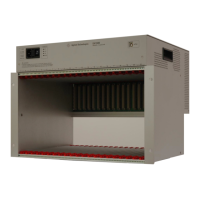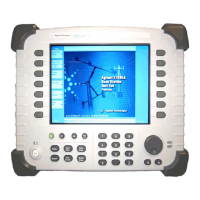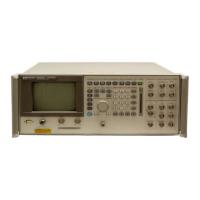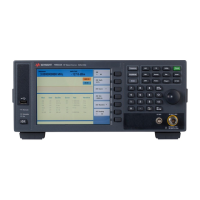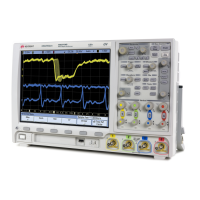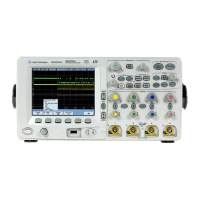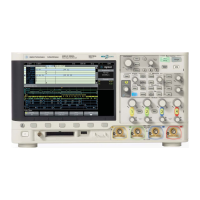Chapter 3 115
Making EDGE (with GSM) Measurements
Making the EDGE ORFS Measurement
Making the EDGE ORFS Measurement
Purpose
The EDGE ORFS measurement is the GSM EDGE (with GSM) version
of adjacent channel power (ACP). Either a single offset is measured
with corresponding traces or up to 15 offsets are measured and a table
is displayed.
The output RF spectrum measurements determine the spectral energy
emitted into the adjacent channels. Excessive amounts of energy
spilling into an adjacent frequency channel could interfere with signals
being transmitted to other MS or BTS. The measurements are divided
into two main groups: spectrum due to the 0.3 GMSK modulation and
noise, and spectrum due to switching transients (burst ramping).
Since GSM is a TDMA format, RF power is being switched on and off
depending on whether the actual burst is being transmitted. The
switching of power causes spectral splatter at frequencies other than
that being transmitted by the carrier. Fast transitions in the time
domain causes switching transients that have high frequency content
associated with them.
NOTE The default output RF spectrum measurements do not perform tests at
frequency offsets greater than 1800 kHz from the carrier.
Measurement Method
In this measurement, the transmitter (source) is set to transmit a GSM
frame at a given channel (frequency). The instrument acquires a time
record at a particular offset from the channel being transmitted. The
method of acquiring the time record is either a FFT/Inverse-FFT
method, or a direct time domain (DTD) method, depending on the
offset. These two methods and when they are used, will be described
below. When the offset is zero, the instrument is said to be measuring
the carrier. For a given offset frequency from the carrier, the
transmitter must not exceed a certain power level relative to the
carrier. The GSM specification defines the offsets and their maximum
absolute and relative power levels.

